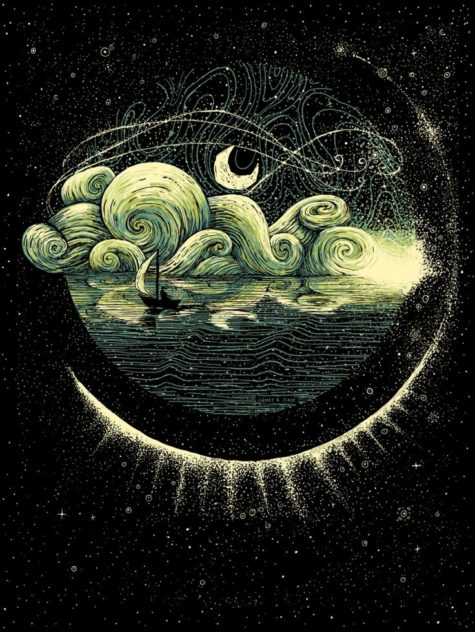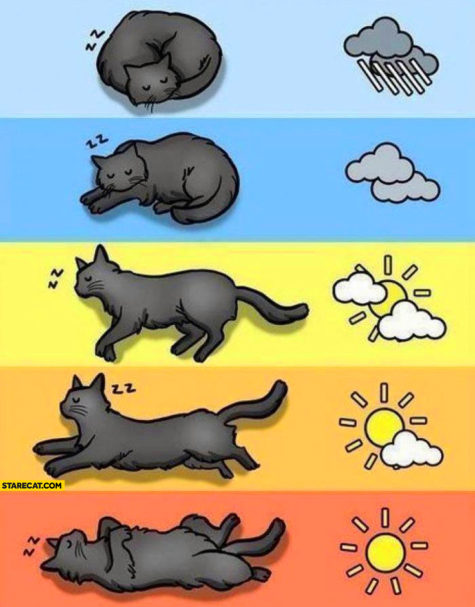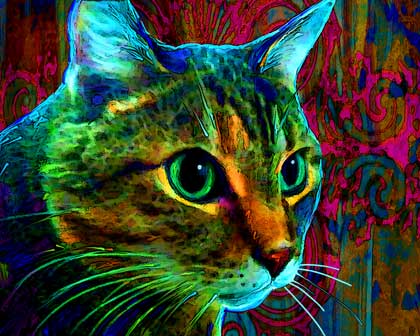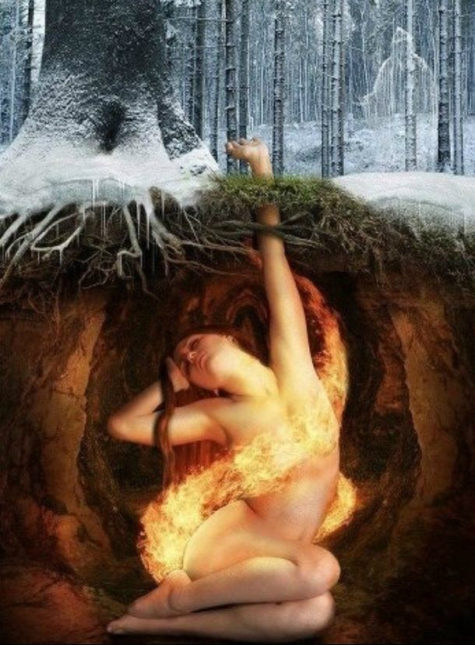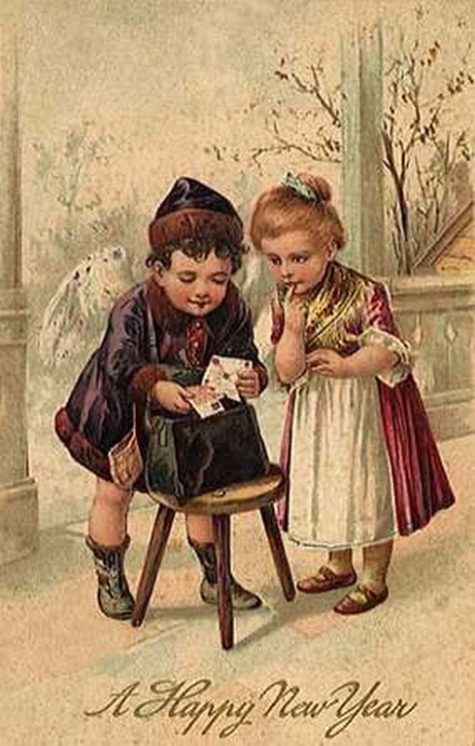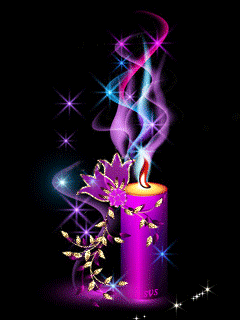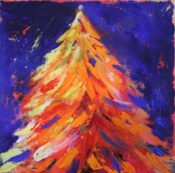Weather
Selenomancy – What is it?
Selenomancy, like most divinatory systems, is quite ancient, and has been practiced since time immemorial by the Babylonians, Scythians, Greeks, and Arabians, among others. It is the art and practice of divination by the observation of the phases and appearances of the moon.
There are countless moon-related omens that have evolved since prehistoric times. Our celestial companion has long been used to divine the fate of individuals at the time of their birth.
For example:
- A child born when the moon is one day old will be blessed with wealth and longevity.
- A child born during the moon’s waning phase signifies that the child will be unhealthy.
- A child born while the moon is full will be a very strong individual.
- A child born during the dark of the moon will need special care and will probably die before reaching puberty.
Different methods of Selenomancy take into consideration the patterns observed on the surface of the moon, the phase the moon is in, its visibility through the cloud cover, and the colors of its reflection. In ancient Assyria diviners interpreted the appearance of a ring or halo around the moon as an omen of an impending siege. However, a break in it indicated a fortunate escape.
When interpreting moon reflections and colors, it was believed that:
- Blue tinge – rain was on the way,
- Red tinge – a strong wind was coming
- White tinge – good weather.
In the south of England, it is said that fine days will follow if there is a fine Tuesday after a new moon, moist days will come after a wet or humid Tuesday after a new moon, and if the horns of the moon are obscured on the third or fourth day, this means rain is on the way. If the circle of the moon is red, troubles and hardships are coming.
If if rains on the first Tuesday after the full moon, it will continue to do so for the rest of that moon period. Similarly, if it is dry on that first Tuesday, it will remain dry for that moon period. If the moon is clear on is rising, it denotes that in the summer there will be fine weather but in the winter there will be a severe cold spell. Clearness at the full moon suggests a fair period, as does a halo that melts quickly. A double halo means there is going to be a storm.
An ancient superstition is that it is bad luck to have a child born in moonlight. It was also believed that anyone sleeping in moonlight for any length of time ran the risk of going either blind or crazy.
Sources: Moon Magic and The Occultopedia
Divining Rain
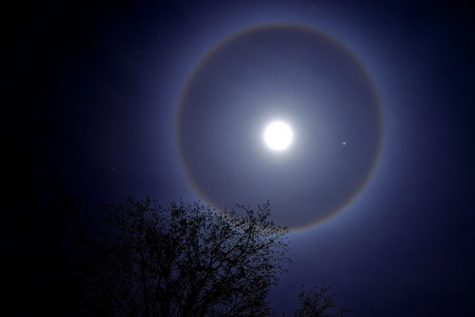
A ring around the moon means a storm is coming.
Count the stars within the ring and rain will come in that many days.
Weather Forecasting – Feline Style
In almost every country where they were known, cats were believed to have mystical powers, and among other things, to be able to foretell and control the weather. Here is a list of what can be expected weather-wise based on cat behavior and actions:
- When cats run about wildly, or claw at carpets and cushions, wind is coming.
- A cat sleeping with all four paws tucked under means bad weather is coming.
- When the pupil of a cat’s eye broadens, there will be rain.
- A cat washing itself is believed to be a forecast of rain.
- To throw a cat overboard causes an immediate storm at sea.
- If a cat sneezes it will rain.
- If the cat turns its tail to a fire or any substituting heat source, it foretells a possible change in weather, particularly the coming of heavy rain or hard frost.
- If a cat sits with its back to the fire, it is a sure sign of frost.
- If a cat curls up with its forehead touching the ground, it indicates that storms will happen in the near future.
- If a cat continually looks out a window on any day, rain is on the way.
- Sailors believed that if a cat licked its fur against the grain it meant a hailstorm was coming; if it sneezed, rain was on the way; and if it was frisky, the wind would soon blow.
- A German belief says that mistreating a cat can cause a rainstorm to occur on the clothes you’ve hung out to dry.
- It was a popular belief that cats could start storms through magic stored in their tails – so sailors always made sure that they were well-fed and contented.
- If a cat licks its fur in the opposite way that it naturally lies, there will be significant rain.
- Alternatively, if the cat calmly and smoothly washes itself, expect fair weather.
- Forgetting to feed your cat on your wedding day is an invitation to the rain.
- To see a cat eating grass foretells rain.
- Anyone who makes cats his enemy is certain to be accompanied to the grave with wind and rain.
- If the cat tears of the cushions or carpet with its claws, it is a sign that wind is coming, as we say, “the cat is raising the wind“.
- If cats are playing in the house and an unusually lively way, windy or stormy weather is approaching.
- If the cat while washing its face draws its paw over its forehead it is a sign of good weather. If not, it means speedy rain.
- Indonesians and Malays believe that if you wash your cat it will bring rain.
Collected from various sources
Ailuromancy – What is it?
Ailuromancy or aeluromancy , also known as felidomancy, is a form of theriomancy. It is divination using cats’ movements or jumps to predict future events, especially the weather.
Cats have been revered as magical since the time of the ancient Egyptians. One of the most common methods of ailuromancy utilizes the movements and behaviors of a cat to predict upcoming weather patterns.
Weather forecasting With Cats:
- A cat washing itself is believed to be a forecast of rain.
- If a cat sneezes it will rain.
- If the cat turns its tail to a fire or any substituting heat source, it foretells a possible change in weather, particularly the coming of heavy rain or hard frost.
- If a cat sits with its back to the fire, it is a sure sign of frost.
- If a cat curls up with its forehead touching the ground, it indicates that storms will happen in the near future.
Other forecasts:
- To see a cat wash behind its ears is a sign that a visitor will call.
- If a fisherman’s wife keeps a black cat in her house, her man will return safely from sea.
Gloom and doom:
- If a cat leaves a house when there is illness within, and will not be coaxed back, the sick person will die.
- A sick person will die if he or she dreams of cats or sees two cats fighting.
- If a cat sneezes three times in a row, everyone in the family will come down with a cold.
Your cat may also assist in divination:
Leave a door open and think of a question that can be answered yes or no. Call your cat into the room and notice which paw it first places on the floor. If it is the right forepaw, the answer is yes; if the cat steps with the left, the answer is no.
Collected from various sources
Aeromancy – What is it?
Aeromancy (from Greek aero, “air”, and manteia, “divination”) is the art of foretelling the future by the observation of atmospheric, air or sky phenomena. This goes beyond the range of weather forecasting, concentrating in such things as wind currents, cloud shape and formation, comets and falling stars, spectral formations, and other phenomena which are not normally seen or visible in the heavens. Even today such visions cause speculation and sometimes consternation among human viewers.
Due to the historical interest people have had in weather, seeing it as a medium by which the gods expressed both joy and anger towards those who worshiped them, it is no surprise that aeromancy is one of the oldest forms of divination. The Hindus, Etruscans, and Babylonians in particular found the signs in the sky to be of great interest and practiced forms of chaomancy and ceraunoscopy. This fascination with the omens in the skies was reflected by the gods worshiped by these peoples. Two gods associated with ceraunoscopy are:
- Tinia, the Etruscan god of lightning
- Adad, the Babylonian god of thunder, lightning, and prophesy
There are several types of divination that can be categorized under the term “aeromancy”:
- Austromancy, divination by observing the wind.
- Anemoscopy is austromancy in which the wind direction and intensity is interpreted.
- Cometomancy, divination by the appearance of comet tails.
- Ceraunoscopy, divination by the interpretation of thunder and lightning.
- Chaomancy, divination by aerial visions, is nearly synonymous with aeromancy, but most often refers to nephomancy or cometomancy.
- Meteormancy, divination by meteors and shooting stars.
- Nephomancy is divination by the interpretation of the movement of clouds.
Modern Aeromancy:
Some forms of modern aeromancy have taken a more introspective turn than their historical counterparts. For instance, modern nephomancy is a receptive, almost meditative process, by which a person is said to be able to examine their unconscious. The nephomancer studies the clouds, whose formations are random and constantly changing. The images and symbols the diviner picks out from the chaos are believed to have some sort of significance to the diviner, so long as he applies his own personal interpretations to the symbols, rather than those written or spoken about by another.
Source: Wikipedia
Weather Divinations for Imbolc
Imbolc (Feb 2) was traditionally a time of weather divination, and the old tradition of watching to see if serpents or badgers came from their winter dens may be a forerunner to the North American Groundhog Day. A Scottish Gaelic proverb about the day is:
Thig an nathair as an toll
Là donn Brìde,
Ged robh trì troighean dhen t-sneachd
Air leac an làir.
“The serpent will come from the hole
On the brown Day of Bríde,
Though there should be three feet of snow
On the flat surface of the ground.”
Imbolc was believed to be the day the Cailleach — the hag of Gaelic tradition — gathers her firewood for the rest of the winter. Legend has it that if she wishes to make the winter last a good while longer, she will make sure the weather on Imbolc is bright and sunny, so she can gather plenty of firewood. Therefore, people would be relieved if Imbolc is a day of foul weather, as it means the Cailleach is asleep and winter is almost over and spring is on it’s way. Read more here: Là Fhèill Brìghde.
Other weather divinations include:
- “Red sky at night, sailor’s delight; red sky at morning, sailor take warning”. This weather rhyme is a quick way to remember that dry particles in the air causes the sky to look red. Dry air in the west (the night sky), the weather will be dry. If the sky is red in the east (morning sky), wet weather is headed your way.
- “Circle round the moon, rain or snow soon.” A “circle” around the moon indicates moisture in the air, bringing precipitation.
- Catch the cat cleaning it’s ear’s on Imbolc? Tradition says that this means a storm is coming.
- Check out the pine cones. If they are closed, it means wet weather is on it’s way. Open cones predict dry weather.
Crickets have been shown to be very good indicators of air temperature. Count the number of chips a cricket makes for 14 seconds. Add 40 and the sum of the two numbers will equal the temperature to within 1 degree 75% of the time.
From: Wikipedia and Examiner.com
New Years Divinations
Some Albanian tribes celebrate their New Year on the first of September, and everything that happens during the day, presages the happenings of the months of the year, as to whether they will be lucky or not.
On New Year’s day dip your thumb seven times in salt and put in your mouth all that rests on the nail. You will dream that your future husband or wife will bring you water. (Persia.)
On New Year’s night, it was an old Welsh custom with the wise and courageous old men of the parish to sit up all night in the church porch. On that night, it was said, a voice, emanating from beneath the altar table, pronounced the names of those who should die within the coming year.
If a woman dies first in the year, then the greatest mortality during the year will be amongst women; and vice versa if a man dies first. (Gloucestershire, England.)
On New Year’s eve, the Gurians in Russia place small pitchers of wine in each of the bed-rooms of the family; if in the morning the wine has increased, the harvest will be abundant; but if the wine is lessened, they will have bad luck that year.
During the time that the male Jews are at the synagogue on the night of the tenth of the month Tisri (Yorn Kippur, the day of atonement), the women light the candles and lamps at home, and according as the light burns prognosticate good or evil fortune.
If your first caller on New Year’s day is a male, you will have good luck and many friends; if a female, bad luck and few friends.
Turn your pillow at midnight of the thirty-first of December, and you will dream of the one you are to marry.
If the sun shines on New Year’s day, it is a sign that the flax will be straight.
He who steals on New Year’s, can steal safely for a year.
Every Chinaman must perform the extraordinary act of taking a bath on New Year’s day. To fail in this would be a bad sign.
The Chinese put potatoes in water on New Year’s eve and prognosticate their fortunes by the way they grow. If they are not thrifty they will meet with trouble during the year.
At midnight on New Year’s the Japanese build small fires on the floor of their houses and from the manner in which the flames arise, foretell what will be their luck during the coming year.
At Liege, Belgium, it is a bad sign if a little girl presents you the first wishes for a happy New Year, but lucky if it is a boy.
It is an old Dutch superstition that, if you want to marry the girl you love, your voice must be the first one she hears, and your face the first she sees, on New Year’s morning.
Venetians consider it very important to notice whom you meet the first thing on New Year’s day. If it is a man, you will have good luck, if a woman, bad luck; if a priest, you will die within the year; if a policeman, you will have litigation.
The first person of the opposite sex you meet on New Year’s day will bear the Christian name of your future partner.
If ice melts on the 1st of January, it will freeze the 1st of April.
In one part of modern Greece all in the house go out early on New Year’s morning each bearing a branch on which the leaves are well dried. These they cast on the open fire, each wishing at the same time good luck to the family. The greater the fire, the better the augury.
On New Year’s eve take your hymn-book to your bedroom, blow out the lamp, open your book and mark a hymn (in the dark), put it under your pillow, and sleep on it. Next morning read the hymn, and its text will indicate the events of the year.
Your conduct on New Year’s day is a forerunner of your conduct all the year.
It is said that whatever the experience of a person is on New Year’s day, so it will be all the year, either tears or smiles.
In Scotland, the first person who comes to the house on New Year’s day will govern the luck of the house for the year, and in this belief, the “first foot,” is carefully watched.
In Transylvania on New Year’s eve the young men of the family bind together as many wreathes as there are persons in the house and throw them over the roof. Those that fall indicate the ones who will die that year.
Lay a green ivy leaf in a dish on New Year’s night, cover it with water and set it in a safe place until the fifth day of the year. If the leaf is then still green and fair, you will be safe from any sickness all the year; but if you find black spots on it, you may expect sickness.
In Pomerania and also in this country, young ladies believe that if they rapped at a poultry-house door at midnight on New Year’s eve, and the cock cackled first, they would surely be married that year; but if the hen cackled first, they would remain maids.
“On New-Year’s Day
Take out and then take in,
Bad luck will begin:
Take in, then take out,
Good luck will come about.”
On New Year’s eve, if a person wishes to know his fate during the coming year, he must go into the open air with a psalm book in one hand, and a piece of silver in his mouth. He must allow the book to fall open, and if it opens at the death psalm he will die; if it opens at a bridal psalm, he will marry; and whatever else it opens to, will indicate his fate. (Sweden.)
A “plane-soled” or “flat-footed” person is considered in Scotland a sanctimonious person and unlucky to meet on New Year’s day; while a hearty, merry fellow is good luck. It is necessary for all to drink every drop in the glass presented, and eat all of the bread given on that day, for good fortune. If anything unusual takes place on that day, it is noted and talked of all the year, so important to the village fortunes are the events of New Year’s Day.
In Turkey, if a stranger visits you on New Year’s day he must go to the hen-house and place an egg under a hen. If she does her duty and sits upon it the stranger is auspicious and is feted. It is called “the lucky foot.”
“If New Year’s-eve night wind blow south.
It betokened warmth and growth,
If west much milk and fish in the sea,
If north much cold and storms there’d be,
If east the trees will bear much fruit
If north east Bee it, man and brute.”
On New Year’s eve the Italian maiden places in one corner of her bed room a thimble, in another water, in a third ashes, and in the fourth a ring. Upon waking in the morning if she sees the ring first, she will be married that year; if she sees the water first, the year will be unlucky; if the thimble, fortune will smile on her; if the ashes, she will die.
On New Year’s morning take the Bible, lay it upon the table, open it and place your finger on the page at random. The verse upon which your finger touches will give some idea as to your future for the coming year.
The first baking after New Year’s day, make as many little cakes as there are people in the house, give each a name, and pick a hole in it with your finger; if any one’s hole gets baked up, he or she will die.
“With business is the year auspiciously begun:
But every artist, soon as he has tried.
Works but a bit, then lays his work aside.”
As a weather guide the first day of the year is much regarded. East wind on New Year’s day forecasts a year of cattle plague. West, the death of kings. S. W. epidemics, North, fertility.
Source: Encyclopaedia of Superstitions, Folklore, and the Occult Sciences of the World
Twelve Days of January Weather
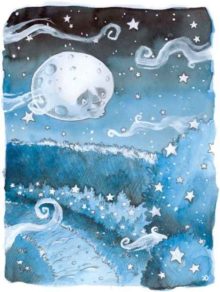 Whatever the weather is like the first twelve days of January indicates what the weather will be like for the next twelve months. Each day equals one month in succession.
Whatever the weather is like the first twelve days of January indicates what the weather will be like for the next twelve months. Each day equals one month in succession.
From Moon Magick
Debbie: Reading Candle Wax
Bridget Grimes: 310112_svyatki2_500
Mari: Reading Candle Wax
Ali: Notarikon
ALI: Notarikon
